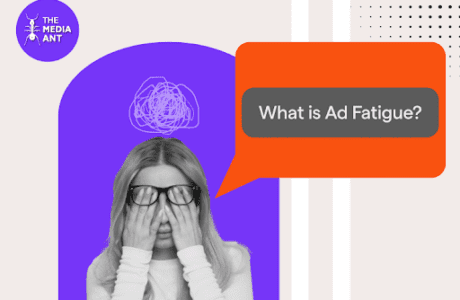What makes content shoppable?
In today’s digital world, content is not just for consumption but for action. Shoppable content refers to any form of media—whether it is a video, post, or live stream—that allows users to make purchases directly from the content they are interacting with. By embedding product links, tags, or checkout options within the content, it removes the friction that typically exists between discovery and purchase. Whether you’re scrolling through Instagram, watching a YouTube tutorial, or chatting on WhatsApp, you can seamlessly shop the featured products without leaving the platform.
What Is Shoppable Content?
Shoppable content is a revolutionary approach where consumers can shop directly through the content they engage with. It’s more than just advertising—it transforms any piece of content into an interactive shopping experience. Whether it’s through videos on Instagram or live streams on Amazon, brands are now able to tag their products, allowing users to make purchases without ever leaving the app. This seamless integration is changing how consumers interact with content in India and around the world.
How Shoppable Content Works
Shoppable content works by integrating clickable tags or links that connect users directly to product pages. Imagine you’re watching a makeup tutorial on Instagram. The creator applies lipstick, and with a simple tap on the screen, you can purchase it. From beauty tutorials to fashion hauls, shoppable content enables users to shop without interruption. For example, Amazon India’s live shopping events allow viewers to interact with influencers, ask questions, and shop all within the same live stream.
Shoppable Content Trends in India
1. Growth of video commerce (influencer plus brand collaborations)
The combination of video content and influencer collaborations is booming in India. Brands like Nykaa and Myntra have embraced this by partnering with influencers who create shoppable videos, directly linking the products featured to their online stores. These collaborations are driving significant engagement and sales, particularly among younger, mobile-savvy audiences.
2. WhatsApp commerce plus Instagram shopping
In India, platforms like WhatsApp and Instagram are becoming key players in the shoppable content ecosystem. WhatsApp Business enables businesses to set up catalogs, while Instagram’s shop feature lets users tag products in posts and stories, making it easy for users to purchase with a tap.
3. Tier-2 and Tier-3 cities catching up with mobile-first commerce
As internet penetration increases in smaller cities, mobile-first commerce is rapidly gaining popularity. Platforms like Meesho and Flipkart Video are leading the charge, offering shoppable video content that targets audiences in Tier-2 and Tier-3 cities, where mobile commerce is becoming a dominant shopping method.
Benefits for Brands and Advertisers
1. Shortens buyer journey
Shoppable content reduces the steps between discovering a product and making a purchase. Brands can move their audience directly from inspiration to transaction, eliminating the need for multiple steps like browsing or cart adding. Myntra, for example, uses shoppable posts to make the process seamless, and it results in higher conversion rates.
2. Increases conversion rates
By removing friction and allowing immediate purchases, shoppable content significantly increases conversion rates. It makes the entire process more intuitive, helping users act on impulse and shop faster. This integration results in a more direct, efficient buying process that benefits both the consumer and the brand.
3. Boosts user engagement with interactive content
Unlike traditional static ads, shoppable content encourages user interaction, which increases engagement. Videos, polls, and real-time feedback turn passive consumption into active participation. Brands that use interactive shoppable content tend to see more interactions and better user retention.
4. Great fit for influencer plus content marketing
Shoppable content works exceptionally well with influencer and content marketing strategies. Influencers, especially those with a niche following, lend credibility and authenticity to the content, making it easier to convert their followers into customers. Collaborating with influencers like BoAt and Plum allows brands to tap into highly engaged, loyal audiences.
Examples of Shoppable Content in India
1. Nykaa’s influencer-led shoppable videos
Nykaa has mastered the art of shoppable content with its influencer-led beauty tutorials. By tagging the products used in the videos, Nykaa allows users to purchase instantly, making the content both informative and transactional.
2. Amazon Live with creators
Amazon India’s Live Shopping Events are a great example of how shoppable content can be interactive. Influencers showcase products in real time, engage with viewers, and help them make purchasing decisions—all while the audience watches the stream. The seamless integration of shopping within the live event is driving higher engagement and conversions.
3. Myntra’s StyleCast
Myntra launched its StyleCast feature, a shoppable video content hub where users can watch fashion videos and shop the featured products instantly, creating a fun and engaging shopping experience.
4. Meesho leveraging video plus content-driven discovery
Meesho, India’s largest social commerce platform, uses a mix of shoppable video content and content-driven discovery. Users can find products through engaging videos and shop directly within the app, which is a perfect example of leveraging shoppable content for discovery and purchase.
Best Platforms for Shoppable Content in India
The following platforms are leading the charge in shoppable content in India, each offering unique features that help businesses drive engagement and sales:
- Instagram (Shoppable Posts, Stories, and Reels)
Instagram is one of the most powerful platforms for shoppable content in India. Through Shoppable Posts, Stories, and Reels, businesses can tag products directly in their content, making it easy for users to purchase the items they see in posts. The platform’s integration with Instagram Checkout allows users to buy products without leaving the app, offering a seamless shopping experience. Influencer collaborations and highly visual content further boost engagement. - YouTube (Shoppable Video Cards)
YouTube has become an increasingly important platform for shoppable content in India. With YouTube’s shoppable video cards, brands can directly link products in their video content, allowing viewers to shop instantly while watching product demonstrations or tutorials. YouTube’s large user base in India and its focus on video-based content make it an ideal platform for product discovery and purchases. The platform also integrates with Google Shopping, enabling businesses to reach a wide audience with targeted ads. - WhatsApp Business (Product Catalogs and Links)
WhatsApp Business is rapidly becoming a go-to platform for small and medium-sized businesses to engage with customers. By creating product catalogs and sharing product links, businesses can showcase their offerings directly through chat. WhatsApp’s personal and direct communication style fosters trust, and with features like the “Buy Now” button, users can make purchases directly within the app. This is especially effective for businesses targeting local markets and regional audiences. - Amazon (Live Shopping Events)
Amazon India has been a pioneer in integrating live shopping events into its platform. Influencers and sellers host live streams where products are demonstrated, and viewers can interact with the hosts and make purchases in real-time. These live shopping events are a huge draw during big sales like the Great Indian Festival, offering exclusive deals and discounts. Amazon’s vast reach and trusted brand also contribute to high conversion rates for shoppable content. - Meesho (Video Commerce)
Meesho, a popular social commerce platform, allows sellers to create shoppable videos that showcase products in an engaging, content-driven format. Meesho’s mobile-first approach has been a game-changer for sellers, particularly in India’s Tier-2 and Tier-3 cities. Through video commerce and an easy-to-use interface, Meesho makes it easier for businesses to reach a wide audience and drive sales with minimal investment in traditional advertising.
These platforms allow businesses to tag products, provide interactive shopping experiences, and drive direct purchases without users leaving the platform.
How to Create Shoppable Content (Step-by-Step)
1. Choose platform and format
Select the right platform based on where your audience spends the most time. Instagram Reels, YouTube, and WhatsApp are great places to start. Decide if you want to use images, videos, or live streams as your format.
2. Tag products or use shopping APIs
Utilize shopping features available on platforms like Instagram and YouTube to tag your products. Alternatively, integrate APIs on your website or app to enable direct shopping through content.
3. Collaborate with creators
Work with influencers or content creators to help promote your products in a more relatable and authentic way. Their followers are more likely to engage and make purchases.
4. Track clicks, sales, and engagement
Use tools like Meta Ads Manager or YouTube Studio to track the performance of your shoppable content. Monitor clicks, conversions, and engagement to fine-tune your strategy for better results.
Challenges in the Indian Market
1. Low trust in new platforms
Many Indian consumers are still hesitant to purchase products from unfamiliar platforms. Brands must focus on building trust through authentic content, positive reviews, and customer testimonials.
2. Payment integration friction
Despite widespread adoption of digital payments, there is still friction in payment integrations, especially for smaller platforms. Ensuring a smooth, seamless payment process is key to converting potential buyers.
3. Regional language support for wider adoption
India’s linguistic diversity means that providing regional language support is essential for brands aiming to expand their reach. Shoppable content needs to be accessible in multiple languages to ensure wider adoption.
The Future of Shoppable Content in India
1. Rise of live shopping and social commerce
Live shopping is set to grow even more in India, with platforms like Flipkart and Meesho investing heavily in interactive video commerce. The integration of shopping and social experiences will drive new levels of engagement.
2. Regional creators driving vernacular shopping journeys
As regional creators gain more influence, shoppable content will expand into vernacular languages, helping brands connect with local audiences in a way that feels personalized and authentic.
3. Brands adopting immersive tech (AR try-ons, live demos)
The future of shoppable content includes more immersive technologies. Brands are starting to adopt Augmented Reality (AR) for virtual try-ons in fashion, beauty, and eyewear, making the shopping experience even more engaging.
Conclusion
Shoppable content is more than just a trend—it’s a fundamental shift in how brands connect with consumers in India. By seamlessly integrating shopping options into the content experience, it removes barriers between discovery and purchase, making it easier than ever for consumers to act on their interests in real time. With the rise of social commerce, live shopping, and immersive technologies like AR, the future of shopping is interactive, personalized, and instant.
For brands, this presents a unique opportunity to drive higher engagement, boost conversion rates, and build deeper relationships with their audience. The evolution of shoppable content in India is being fueled by mobile-first platforms, influencer collaborations, and localized experiences, all of which make it easier for brands to reach and engage a diverse, tech-savvy consumer base.
Now is the time for businesses to embrace this change, whether they’re a large brand or a small startup. The success of shoppable content is clear—it’s a powerful tool that allows brands to not only sell products but also tell stories, engage their audience, and deliver value in ways that feel natural and authentic. The future is shoppable, and those who act now will be leading the charge in this new era of commerce.
FAQs
What is shoppable content?
Shoppable content is digital content that allows users to make purchases directly from the content itself by clicking on embedded product tags or links.
How does shoppable content work in India?
Shoppable content works on platforms like Instagram, WhatsApp, and YouTube, where products are tagged and users can buy them without leaving the platform.
Which platforms support shoppable content in India?
Platforms like Instagram, WhatsApp, Amazon, and Meesho support shoppable content in India.
Is shoppable content effective for small businesses?
Yes, it’s an excellent tool for small businesses, especially with platforms like Instagram and WhatsApp making it accessible and cost-effective.
How can brands create shoppable videos or posts?
Brands can create shoppable content by tagging products in posts on Instagram and YouTube or integrating shopping features through platforms like WhatsApp Business and Shopify.





